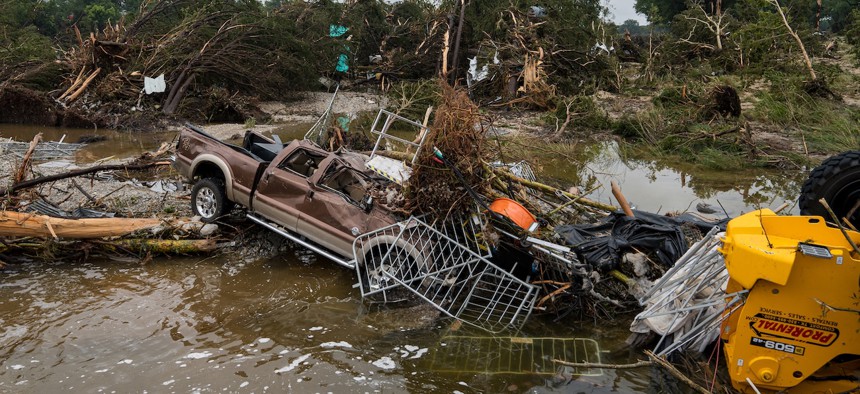Government Cuts and the Texas Floods: An Investigation
In the wake of the catastrophic floods that struck Texas recently, some Democratic lawmakers have raised concerns regarding the potential repercussions of reductions made by the Trump administration to the federal workforce, including meteorological staff. Senator Chris Murphy commented, “Accurate weather forecasting helps avoid fatal disasters,” alluding to the belief that these cuts may have hampered the National Weather Service’s (NWS) capacity to predict severe flooding effectively.
However, White House Press Secretary Karoline Leavitt refuted these claims, asserting in a statement that “these offices of the NWS were well-staffed… so any claims to the contrary are completely false.”
Examining the Staffing Cuts
During the Trump administration, a substantial proposal emerged aiming for a 25% reduction in the $6.1 billion budget of the National Oceanic and Atmospheric Administration (NOAA), which oversees the NWS. This plan is intended to commence in the 2026 financial year starting this October, making it unlikely to have influenced the recent floods directly.
Nevertheless, staffing levels at the NWS had already been impacted by the administration’s efficiency initiatives since early January. The Department of Government Efficiency (Doge), previously managed by Elon Musk, initiated buyout offers and early retirement packages for federal workers, which ultimately led to the departure of around 600 employees from a workforce that originally numbered approximately 4,200.
According to Tom Fahy, legislative director for the National Weather Service Employees Organization, there were notable reductions, with some NWS offices operating with significant staff shortages. The Associated Press reported that many NWS offices had a vacancy rate exceeding 20%, double that of a decade ago.
Assessing Current Flood Response
Despite the staffing cuts, experts interviewed by BBC Verify concluded that the NWS’s forecasts and flood advisories leading up to the Texas disaster were adequate under the circumstances. Avantika Gori, a civil and environmental engineering professor at Rice University in Texas, mentioned, “The forecasts and warnings all played out in a normal manner. The challenge with this event was that it is very difficult to forecast this type of extreme, localized rainfall.”
Moreover, Andy Hazelton, a climate scientist with prior experience modeling hurricane paths, emphasized that staffing did not critically contribute to the flood event. He pointed out that the necessary watches and warnings were disseminated promptly.
Local Office Challenges
Some climate experts have suggested that staffing shortages may have hindered the ability of local NWS offices in Texas to effectively coordinate with emergency services. Daniel Swain, a climate scientist at UCLA, raised concerns about the communication of weather information possibly being inadequate due to these reductions. He indicated that if some local staff members responsible for critical communication had still been employed, the impact could have been mitigated.
Reports indicated existing vacancies in the San Angelo and San Antonio NWS offices, both responsible for overseeing the flooded areas. The San Antonio office notably had two meteorologist positions advertised as vacant.
| Location | Vacancies | Role |
|---|---|---|
| San Angelo Office | 1 | Senior Hydrologist |
| San Antonio Office | 2 | Meteorologists |
Despite these vacancies, both offices had adjusted their staffing in anticipation of the severe weather event, which is a common practice during emergencies. NWS spokesperson Erica Grow Cei stated that additional forecasters were present during the flooding crisis to ensure timely communication of forecasts and warnings.
Weather Balloon Launches and Implications
Amid these discussions, the issue of reducing weather balloon launches surfaced. Meteorologist John Morales highlighted a reported 20% decrease in these launches, suggesting degradation in forecast quality. Weather balloons play a crucial role in gathering essential atmospheric data, enabling meteorologists to refine their predictions.
The NWS has indicated that, while weather balloon launches were suspended at some locations due to staffing shortages, there is no evidence that this directly affected the launches in the flood-stricken areas. Data show that launches proceeded as scheduled at Del Rio, the nearest station to the flooding, capturing data critical to the forecasts.
As investigations into the causes and effects of the Texas floods continue, the intersection of governmental budgetary constraints and emergency preparedness remains a significant point of contention.


